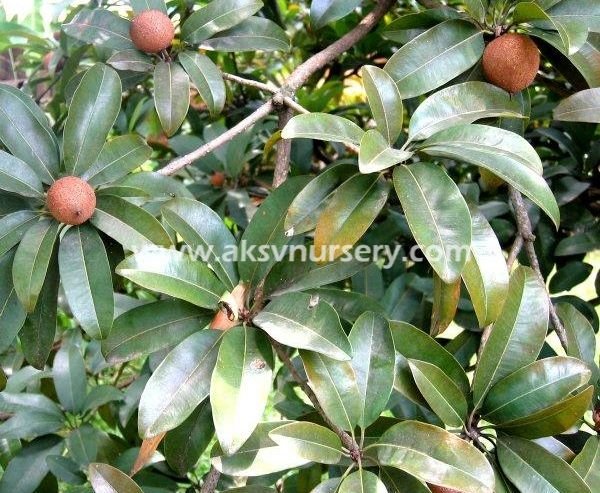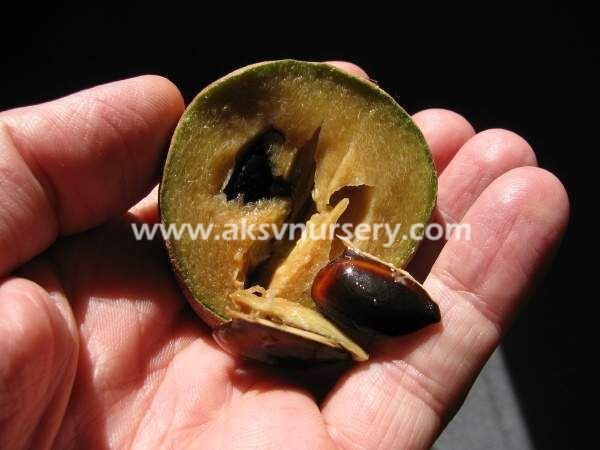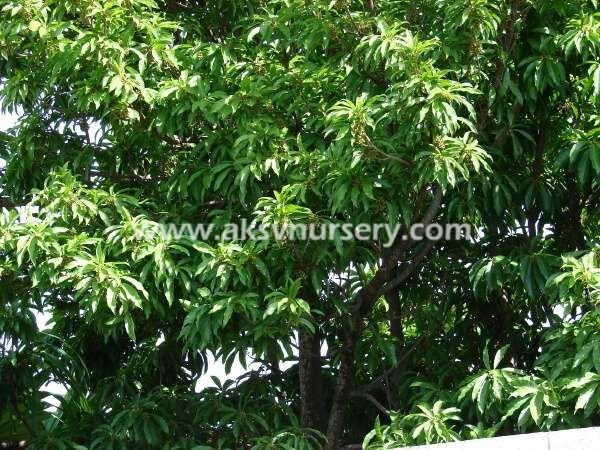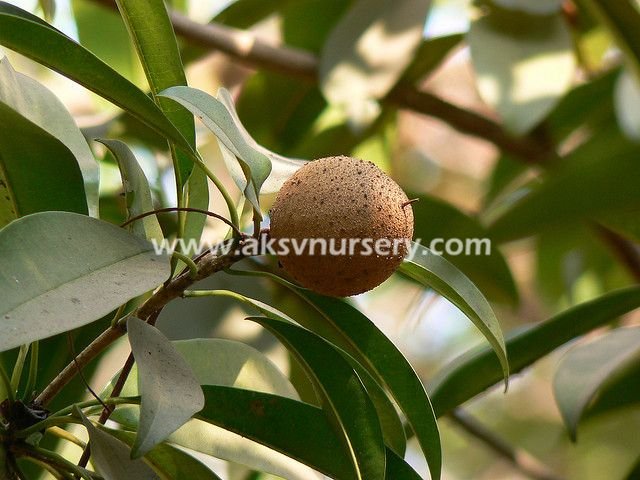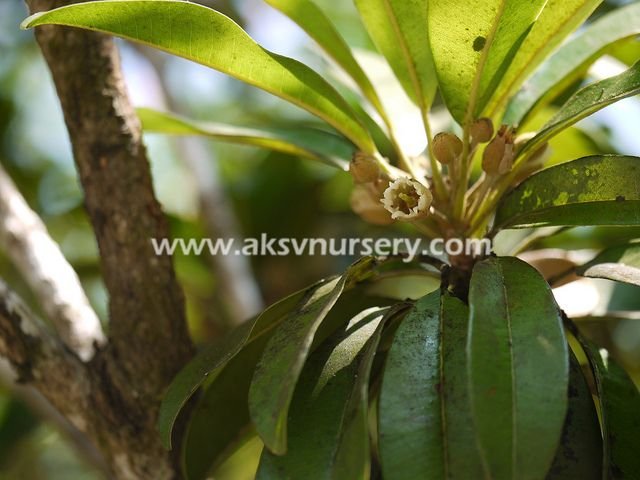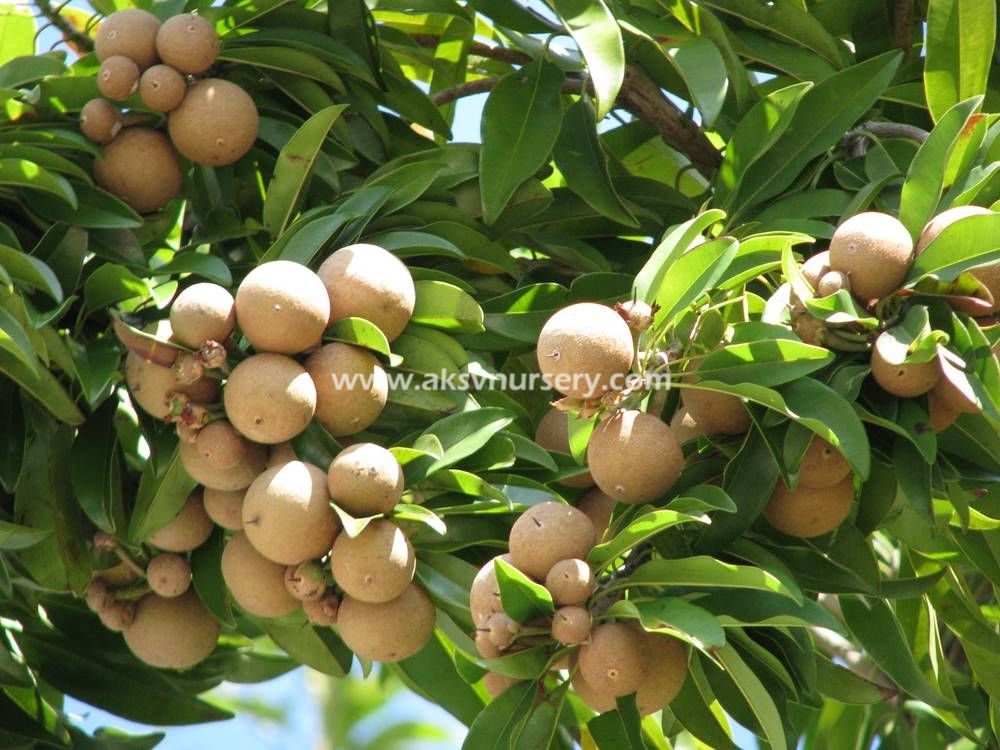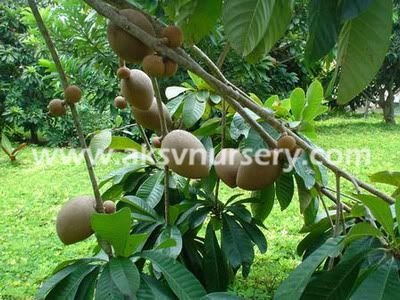Manilkara zapota, Manilkara achras, Achras sapota
Family: Sapotaceae
Sapodilla, Ciku, Naseberry, Nispero, Sapote, Brown Sugar Fruit
Origin: Tropical America
Varieties: Makok, Tikal, Alano, Oxkutzcab, Hasya, Morena, Molix. Season: Sporadic throughout year, March – July. Sapodilla is well spread throughout the tropics. For centuries, It has been one of the most popular and most productive tropical fruit trees in the world, widely grown in India and Africa, West Indies, Philippines, Malaysia, Tropical America and Southern Florida.
Besides delicious fruit, the tree produces white, gummy latex that was an original source of chewing gum (chicle).
Sapodilla is a fairly slow-growing, long-lived medium-size tree, upright and elegant, dense and distinctly pyramidal, with thick glossy green leaves. Flowers are small and bell-like, borne on slender stalks at the leaf bases. The fruit has gray-brown rough textured skin and pinkish-brown, moist, soft and delicious flesh that tastes like a pear soaked in brown sugar. Unripe fruits are hard and unpleasantly astringent. Each fruit has a few hard, black seeds that can be easily separated from the flesh. There is great variation in the size and form of the fruit, from almost round and large, to small and elongated. Numerous varieties and hybrids have been selected throughout the world. Sapodilla trees fruit prolifically, at frequent intervals throughout the year. In the tropics, some cultivars bear almost continuously. The fruits mature 4 to 6 months after flowering.
Most often eaten fresh. After the peel is removed, the fruit is sliced into pieces which are often carved into decorative shapes.
Sapodilla fruit is usually cut in half and the flesh is eaten with a spoon. It is an ideal dessert fruit as the skin, which is not eaten, remains firm enough to serve as a “shell”. The flesh may be scooped out and added to fruit cups or salads. A dessert sauce is made by adding orange juice, and topping with whipped cream. Sapodilla flesh may also be blended into an egg custard mix before baking. The fruit is sometimes fried or stewed with lime juice or ginger. Mashed sapodilla pulp can be added to pancake batter and bread mix before baking. Cooking with sugar changes the brown color of the flesh to a pleasing red.
Sapodilla wine is also very good. Young leafy shoots are eaten raw or steamed with rice in Indonesia, after washing to eliminate the sticky sap.
A major by-product of the sapodilla tree is the gummy latex called “chicle”, containing 15% rubber and 38% resin.
The plant grows naturally in the calcareous marl and disintegrated limestone, and is well adapted to Florida soils; it flourishes also in other types of soil, from deep, loose, organic soil, to loam, light clay, sand or even gravel, but requires excellent drainage. It is strong, wind-resistant, highly drought-resistant, and can stand salt spray. In India, brackish or saline water is sometimes used to reduce vegetative growth and promote fruiting. Commercially grove trees receive no watering, although irrigation in dry seasons will increase productivity.
Unlike most of tropical fruit, Sapodilla seeds remain viable for several years if kept dry. They germinate readily but growth is slow and the trees take 5 to 8 years to bear. Grafted trees start fruiting right away.


